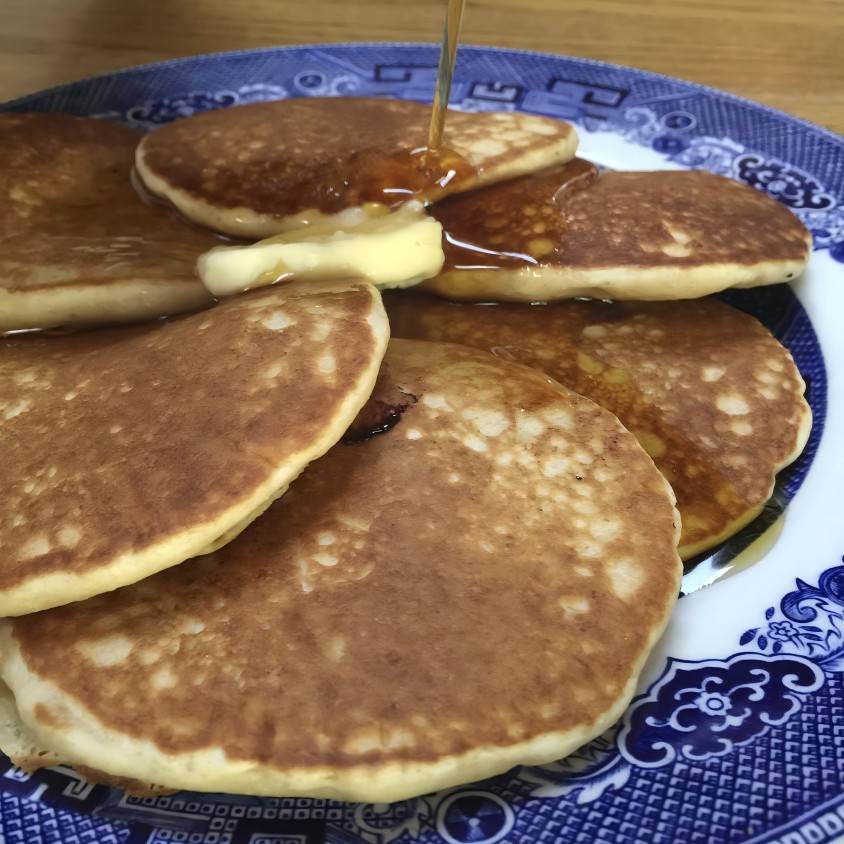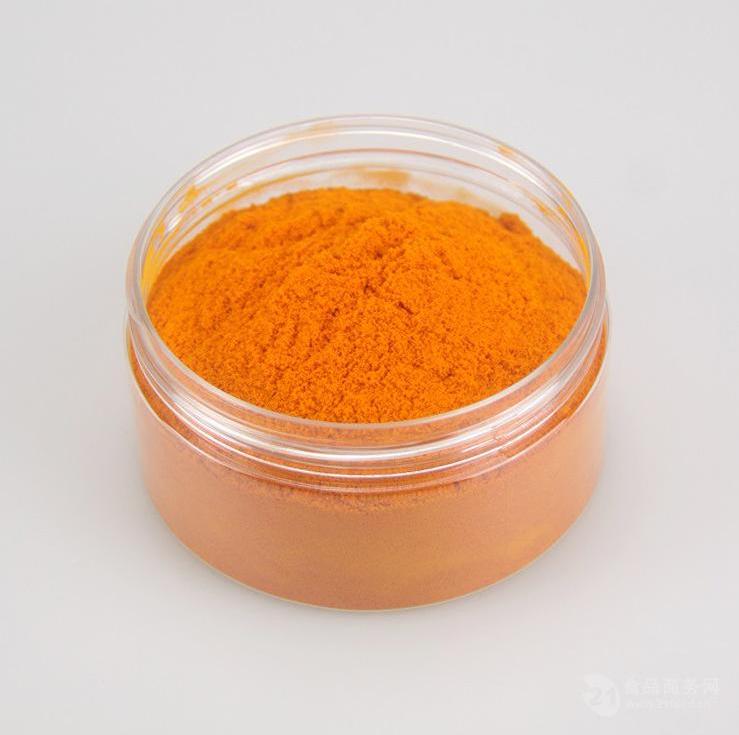Study on the Use of Beta Carotene Powder in Plateau Functional Food
Plateau areas have an important strategic position in our military's defensive operations. The special natural environmental conditions of high altitude, cold climate, and low oxygen partial pressure cause altitude sickness in people who are new to the plateau, which seriously affects the combat effectiveness of the troops. In order to meet the requirements of “being able to fight and win,” the development of functional foods has become the focus of research in the field of military food science. During the research process, it was found that β-carotene can be added to plateau functional foods as a functional factor. This paper focuses on the application of β-carotene in plateau functional foods based on its physiological functions, providing a reference for further research on plateau functional foods.

1 Overview of β-carotene
Beta-carotene is a naturally occurring pigment that is widely distributed in nature. It is the most stable natural pigment, appearing as an orange-yellow, shiny rhombic hexahedron or crystalline powder. It has a melting point of 176°C to 184°C, a slight peculiar smell or taste, and is unstable in the presence of light, oxygen and heat. It is relatively stable in weak alkaline conditions. Its main sources are natural foods such as green leafy plants and yellow and orange fruits.
As research on β-carotene gradually increases, people's understanding of its biological functions is becoming clearer. β-Carotene is a type of carotenoid, and carotenoids have good antioxidant capacity due to their special conjugated structure [1-3]. They are a good free radical quencher and have detoxifying effects. β-Carotene is a precursor substance that is converted into vitamin A [4]. Under certain conditions, β-carotene can be converted into vitamin A in the human body. It is an indispensable nutrient for maintaining human health, and at the same time, it can regulate the body's immune system and has a certain effect of protecting against radiation damage [1, 3]. In addition, β-carotene also has a series of important functions such as photoprotection [2], prevention of eye diseases, cardiovascular diseases, cataracts, prevention of aging and multiple degenerative diseases caused by aging, as well as promoting children's growth and development, and beauty [4]. Currently, β-carotene is mainly used as a nutritional supplement and coloring agent in the form of capsules and gels in a wide range of fields such as food, health products and pharmaceuticals. It is a good coloring agent and nutritional supplement [5].
2 Application of β-carotene in plateau functional foods
β-Carotene powder is a relatively safe and stable natural food coloring agent. It is an excellent and nutritious food additive of type A, and is recommended by the Joint Expert Committee on Food Additives of the Food and Agriculture Organization of the United Nations and the World Health Organization. However, its scope of application has been limited because it is only suitable for the development of oily products and protein products. In recent years, with the rapid development of technology, the use of modern high-tech processing, such as microencapsulation technology, can convert β-carotene into a water-soluble pigment, which has expanded its scope of application. It has been widely used in the food industry as a food additive and for food fortification.
China is a vast country, with plateau regions above 3,000 meters accounting for about one-sixth of the country's total area. These regions are China's main defensive strongholds, but the special geographical environment of high altitude, lack of oxygen, and strong ultraviolet radiation poses a significant obstacle to troops carrying out their missions. How to protect the health of troops from the dietary perspective has always been a key focus of military equipment research. According to the physiological functions of β-carotene, it is currently mainly used as a food additive and nutritional supplement in the food industry, but it is still a blank in military food applications. It is recommended that it be used in plateau functional foods to enrich the variety of military foods and meet the special nutritional needs of plateau troops in peacetime and wartime.
2.1 Hypoxia tolerance
The research group used 40 healthy male Kunming mice (18 g to 22 g) as the research subjects in an airtight hypoxia experiment. The mice were randomly divided into four groups (distilled water group, low-dose group, medium-dose group, and high-dose group). After the experimental mice had been gavaged for one week, an airtight hypoxia experiment was performed [6]. The results showed that β-carotene can significantly increase the survival time of mice in a state of closed hypoxia, proving that β-carotene has an anti-hypoxia effect. The specific mechanism of this effect requires further research. In addition, other related studies have confirmed that β-carotene can improve and strengthen the function of the respiratory system.
High-altitude areas are characterized by high altitudes, cold climates, and low partial pressure of oxygen. Soldiers and officers living in high-altitude environments for long periods of time have special needs for hypoxic tolerance foods. Based on the biological functions of β-carotene, it is added to functional foods in the form of functional factors after being directly added or processed into water-soluble substances using modern high-tech methods such as microencapsulation technology, so that soldiers and officers can supplement sufficient β-carotene, which is important for improving their ability to adapt to high altitudes, maintaining good health and ensuring combat effectiveness. Specifically, there are two main ways to achieve this: one is to add it as a nutrient during the processing of drinks, compressed dry foods, self-heating foods, etc., to enrich the nutrition of existing functional foods. The second is to develop new types of high-altitude functional foods (such as high-altitude functional biscuits) that meet the actual needs of the troops.
2.2 Light protection
The air at high altitudes is thin, with low levels of dust and water vapor, and high atmospheric transparency. As the altitude increases, the sunlight transmittance gradually increases. Strong ultraviolet rays and solar radiation mainly affect exposed skin. Skin diseases such as sunburn, edema, pigmentation, thickening of the skin and an increase in wrinkles are extremely common in high-altitude environments. The eyes are also prone to acute damage, which mainly causes acute keratitis, cataracts, visual impairment and snow blindness, causing serious damage to the human body.
Some studies have shown[4] that taking high doses of beta-carotene can reduce people's sensitivity to the sun. For people who have lived in high altitudes for a long time and have developed skin diseases caused by direct sunlight, targeted supplementation with beta-carotene has a significant effect on improving their symptoms. Soldiers and officers of the Chinese People's Liberation Army who have been stationed in high-altitude areas for a long time face the threat of solar radiation and have varying degrees of skin damage. Therefore, it is possible to consider adding beta-carotene to high-altitude functional foods, so that soldiers and officers can receive nutrients and treatment at the same time through their diet. In addition, natural beta-carotene can also be added to daily cosmetics (lipstick, blush), and in combination with the residual ingredients in the extract (amino acids, vitamins, trace elements and other bioactive substances), it can maintain the natural roundness of the skin tone and provide a certain degree of protection. It should be noted that beta-carotene helps protect people with sensitive skin from the harmful effects of sunlight, but it does not provide sun protection.
2.3 Boosting immunity
The hypoxic environment at high altitudes has a significant impact on human immune cells, resulting in a significant decrease in the immune function of soldiers stationed in high-altitude areas. As we all know, immune function has an important impact on the occurrence and development of diseases. A decline in immune function damages people's health and affects the combat effectiveness of troops. Numerous literature reports [7-10] that β-carotene, as a type of carotenoid, can increase the activity of B cells in the immune system, the number of neutrophils and natural killer cells, and greatly enhance the body's immune function.
In addition, β-carotene can be converted into vitamin A in the human body, and has the physiological activity of vitamin A. Vitamin A can promote the synthesis of immunoglobulins and has an important effect on the body's immune function. When it is lacking, cellular immunity tends to decrease. The application of β-carotene in plateau foods for long-term consumption by plateau soldiers and officers can effectively improve their immunity and is important for maintaining their physical condition.
2.4 Radiation resistance
Radiation damage to living organisms includes damage to hematopoietic function, cell DNA and biological membranes. Ionizing radiation produces a large number of free radicals that can disrupt the balance of the body's antioxidant system, cause metabolic disorders and damage the body. Literature shows [4, 11] that beta-carotene is a powerful antioxidant with the ability to scavenge free radicals, which has obvious efficacy in preventing and treating cancer, can improve DNA damage in irradiated animals [12], reduce the mortality rate of irradiated animals in the chronic stage, increase the activity of superoxide dismutase in the whole blood of irradiated animals, and has a certain protective effect on the damage to the structure of tissues such as the thymus and testes [13].
Troops on the plateau, radar personnel and nuclear research workers who are exposed to strong ultraviolet radiation from the sun for long periods of time are more likely to suffer radiation damage due to their occupational positions. Long-term consumption of functional foods containing beta-carotene can reduce the damage caused by radiation and excessive ultraviolet radiation to the human body, which is of great significance for ensuring the health of military personnel in special positions and maintaining their combat effectiveness.
3 Prospects for the application of beta-carotene in plateau functional foods
In recent years, β-carotene has been widely used in the food industry, animal feed industry, pharmaceuticals, health products and cosmetics industries. With the improvement of living standards and people's growing health awareness, natural pigments like β-carotene, which are safe, non-toxic and have nutritional functions, are becoming more and more valued. Due to its superior source and biological functions, it has huge potential for development. β-Carotene is widely available and easy to obtain. has the dual ability to color and supplement nutrients, and its use in food is increasing. In medicine, β-carotene has the functions of preventing cancer, boosting immunity, and preventing cardiovascular disease, which has promoted the rapid development of β-carotene. These also provide new ideas for the field of functional food research.

In terms of raw material acquisition, there are currently two main forms of β-carotene on the market: synthetic β-carotene and natural β-carotene. There are three methods for producing β-carotene: plant extraction, biological fermentation, and chemical synthesis [2, 14-15]. Extraction methods mainly include organic solvent extraction, ultrasonic-assisted extraction, microwave-assisted extraction, supercritical fluid extraction, enzymatic reaction, etc. [16]. β-Carotene produced by plant extraction and biological fermentation is a natural product that contains various carotenoids and synergistic factors. It is easily absorbed by the human body, has high nutritional value, and has no toxic side effects. Beta-carotene produced by chemical synthesis is a synthetic product that may contain residues from the purification process. Excessive intake by the human body can cause poisoning [17]. Therefore, beta-carotene used in plateau functional foods should mainly be natural products, but the cost is higher, which can be compensated for by expanding the scale of production.
In the future, in order to promote the development of β-carotene applications, especially in the promotion of plateau functional foods, researchers need to conduct research in many areas, such as mechanism research, raw material acquisition, production methods and extraction methods, genetic engineering modification and detection methods, etc., and explore and introduce advanced technologies and processes in the production, processing, preparation, storage and handling processes to improve the yield, preservation rate and purity of natural β-carotene and promote its application in the social food industry and the military plateau functional foods. It should be noted that in the process of developing new markets and expanding into new fields, attention should be paid to the safety evaluation of β-carotene applications, because β-carotene also has certain limitations. Excessive consumption will turn skin pigmentation orange-yellow; avoid eating with alcohol, otherwise toxins are likely to be produced in the liver. Therefore, when added to food, it should be strictly in accordance with the recommended dosage and not used in excess at will.
Application research on β-carotene must draw on local experience, make full use of local resources, and follow the path of military-civilian integration, so that our military's functional military foods can develop quickly and well.
References:
[1] Ren Yanli, Qi Desheng. Physiological functions of β-carotene and its application in animal production [J]. Veterinary Drugs and Feed Additives, 2007, 12(5): 26-28
[2] Cai Chaorong. Information analysis of domestic β-carotene research literature [J]. Journal of Liuzhou Vocational and Technical College, 2004, 4(4): 111-113
[3] Xiong Zhengying, Zhou Hong. The relationship between carotenoids/β-carotene and exercise ability [J]. Journal of Qinghai Normal University, 2003(1):68-71
[4] Sun Yujing, Qiao Liping, Zhong Liezhou, et al. Research progress on the biological activity of carotenoids [J]. Chinese Journal of Food Science, 2012, 12(1):160-166
[5] Tian Zhenjiao, Song Guangsen, Lei Da, et al. Prospects for the production and application of β-carotene [J]. China Oil and Fat, 1995, 20(5): 50-52
[6] Liu Dongsong. Research on the application of β-carotene in plateau functional foods [D]. Wuhan: Military Economic College, 2012
[7] Sakaki Keiji. Solubility of β-carotene in dense CO2 from 308 to 323 K and from 9.6 to 30 MPa[J].Chem Eng.Date,1992,37(2):249-251
[8] Siong Tee. Carotenoids and Retinoids in Human Nutrition. Critieal Rev[J]. Food Sci. Nut, 1992,31:103-16
[9] Bendich. A. Beta-carotene and the immune response[J].Pro Nut Soc, 1991,50:263-274
[10] Fryburg DA, Mark RJ, Griffith BP. The effect of supplemental beta- carotene on immunlogic indices in Patients With AIDS: A Pilot Study[J].Yale J Biol Med, 1995,68(1/2):19-23
[11] Zhao Wen'en, Han Yashan, Qiao Xuguang. Mechanism of carotenoids in scavenging active oxygen free radicals [J]. Chemical Bulletin, 1999, 50: 25-27
[12] Shen Huiqin, Gao Ying. Protective effect of β-carotene on DNA damage induced by mitomycin C in mice [J]. Carcinogenesis, teratogenesis and mutation, 2002, 14(1): 13-15
[13] Jiang Ying, Huang Meiying. Research on the anti-radiation effect of β-carotene. National Food Additive Newsletter, 1992(3): 59-62
[14] Zhu Xiuling, Che Zhenming, Xu Wei, et al. Research progress on the physiological function and extraction technology of β-carotene [J]. Journal of Xihua University, 2005, 24(1): 71-76
[15] Li Saying. Research status and application prospects of β-carotene [J]. Manager, 2010(13): 217
[16] Liu Hongyan, Xin Naihong. Research progress of β-carotene [J]. Tobacco and Chemical Industry, 2013, 42(1): 18-20
[17] Liu Jiayong, Wu Mingjian, Shen Guopeng, et al. Research on natural β-carotene [J]. Journal of Zhengzhou University of Technology, 1999, 20(4): 59-61
-
Prev
The Foods That Contain Beta Carotene
-
Next
What Is the Use of Beta Carotene in Animal Nutrition?


 English
English French
French Spanish
Spanish Russian
Russian Korean
Korean Japanese
Japanese




